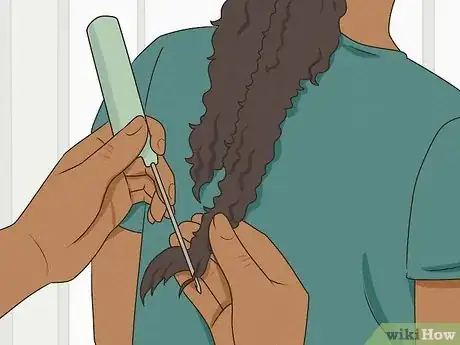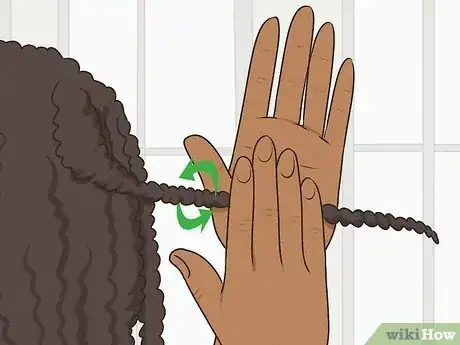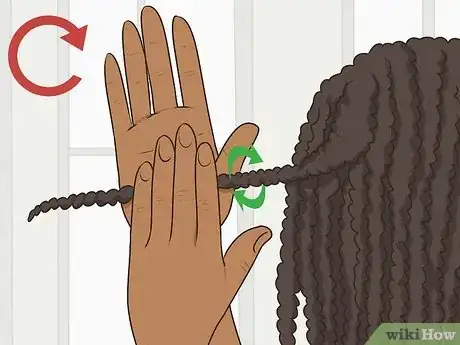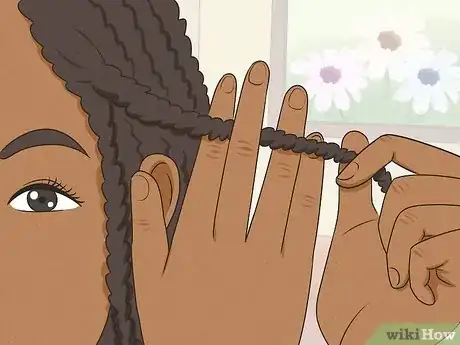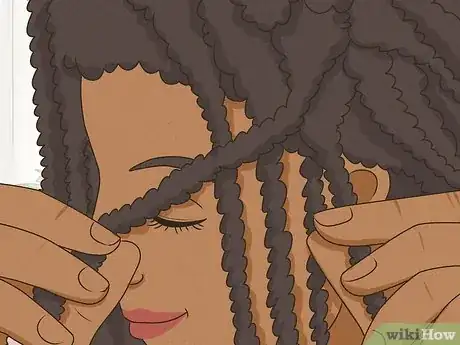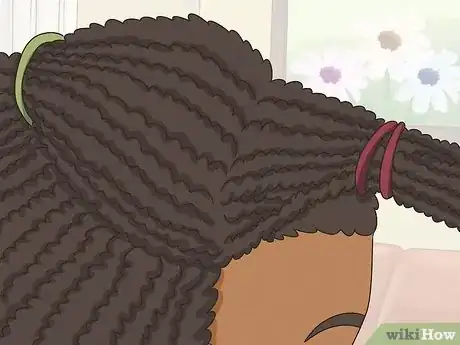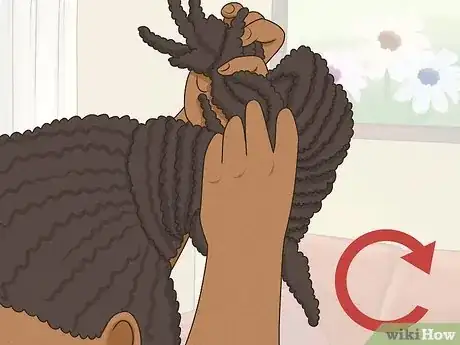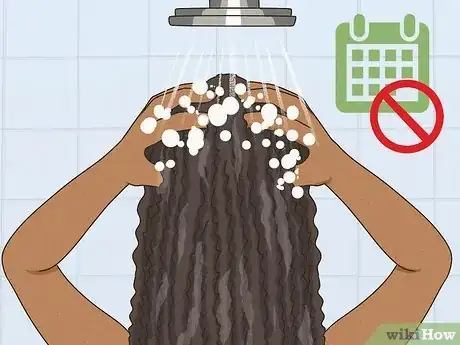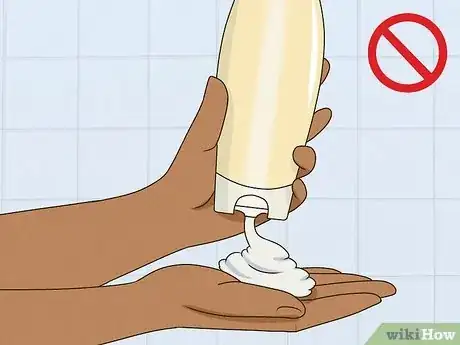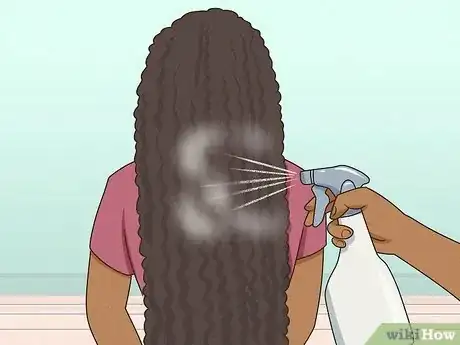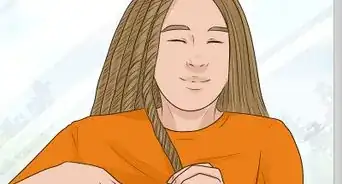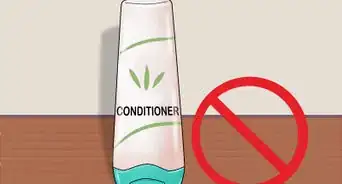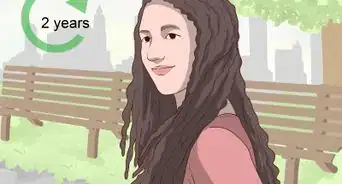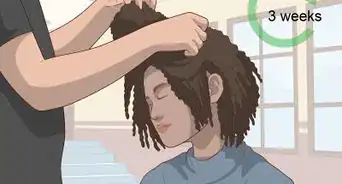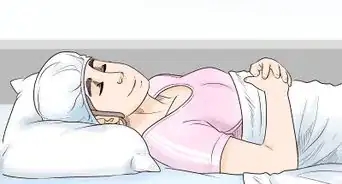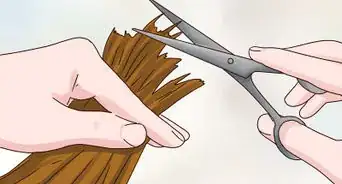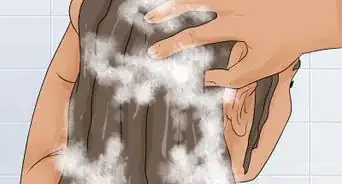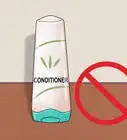This article was co-authored by Noël Reid-Killings. Noël Reid-Killings is a Professional Hair Stylist and the Owner of Noël New York Salon & Boutique. With over a decade of experience, Noël specializes in curating and customizing hair solutions for all hair types and textures. She has worked with countless A-list celebrities including Alicia Keys, Ciara, Yara Shahidi, and Simone Missick. Her work has been featured on makeover shows and in magazines including Essence, Sophisticates Black Hair, Teen Vogue, Elle, 21Ninety, WWD, POPSUGAR, Allure, The Cut, The Huffington Post, and Swaay.
There are 11 references cited in this article, which can be found at the bottom of the page.
wikiHow marks an article as reader-approved once it receives enough positive feedback. In this case, several readers have written to tell us that this article was helpful to them, earning it our reader-approved status.
This article has been viewed 2,054,888 times.
Just because you have straight hair doesn't mean that you can't get dreadlocks. In fact, there are a couple of methods you can use to achieve them. Backcombing and the twist and rip are 2 methods that you can use to start dreading your hair, but both will most likely require a friend's help. If you don't mind waiting for up to 3 years, you can also grow dreadlocks naturally.
Steps
Backcombing Hair into Dreads
-
1Separate the hair into sections. Each section will form a loc. Start separating sections of hair on the back of your head first. Use a comb to separate the hair into a 3⁄4 inch (1.9 cm) thick section. Use your free hand to hold the section of hair together.[1]
- If you want fatter locs, you can separate a thicker section of hair. Use sections that are 1 inch by 1 inch (2.5 cm by 2.5 cm) square at the base for medium locs, or double the size for a large loc.
- Backcombing works best on hair that’s 6 inches (15 cm) or longer, but can work with hair as short as 3 inches (7.6 cm).
- Backcombing an entire head of hair can take up to 4 hours to complete.
-
2Comb the section of hair up towards the scalp with a dread comb. Start by combing the section of hair 3 inches (7.6 cm) from the roots, towards the direction of the scalp. Comb over the same section 5-10 times until the hair starts to bunch up towards the scalp, then slowly make your way down, towards the ends of the hair. Continue combing in 3 inches (7.6 cm) sections until the entire portion of separated hair is backcombed.[2]
- You can purchase a dread comb online or at a beauty supply store.
Advertisement -
3Push a crochet needle through the hair to loop it further. Grip the hair between your index finger and thumb, a couple of inches (about 5 cm) away from the root. Hold the section of hair tightly and run the crochet needle in between your fingers, through the hair several times. Your hair will bunch up even further. Continue doing this down the length of the hair until the entire section is knotted and looped.[3]
-
4Tie rubber bands on the end and root of the loc. After you use the comb and needle, the hair should resemble a dread. Use small rubber bands to secure it at the base of the loc and at the end of the section of hair. This will hold it in place and allow it to keep its form.[4]
- If you plan to go out in public before you have finished dreadlocking your hair, you may wish to use rubber bands that are the same color as your hair to create a more natural appearance.
-
5Apply dread cream to the loc. Look for products like locking gel, lock and twist gel, or beeswax. Dread cream will prevent hair and scalp dryness and will promote the forming of dreads. Squeeze a generous portion into the palm of your hand, then apply it from the root to the end of the loc.[5]
- Gels tend to build up on the hair less than heavier products like wax.
- You can also use some natural, botanical oils with a little bit of a gel. Oil keeps the hair protected before you put the gel on top of it.
-
6Roll the loc in between the palms of your hands. Put the loc between the palms of your hands and roll it back and forth several times so that it forms into more of a rounded shape. Start from the root and work your way down to the end of the loc. This will help form the locs and make them look uniform.[6]
-
7Repeat the process on the rest of the hair. Continue dreading each section of hair in even sections until the entire head has been dreaded. Do not attempt to backcomb the sections again, or you’ll have to restart the knotting process. Remove the rubber bands once you’ve dreaded all the hair.[7]
Using the Twist and Rip Method
-
1Separate a section of hair. Use a comb to gather a 3⁄4 inch (1.9 cm) thick section of hair. This will form the dread. Start by dreading the hair on the back of your head first.[8]
-
2Twist the section of hair with your fingers. Grab the ends of the section of hair in between your index finger and thumb and twist it in 1 direction. Use your other index finger and thumb to hold the twist in place as you twist the end even further. Continue twisting it in the same direction until the entire section of hair is twisted.
-
3Pull the tip of the section apart towards the root. Once the hair is fully wound up, grab the end of the section with both hands and pull the ends of the hair in opposite directions. This will divide the sectioned hair and start the knotting process for the dreads.[9]
- Your section of hair should pull apart easily and shouldn't be painful.
-
4Continue twisting and ripping the section of hair. Depending on the length of the hair, you’ll have to twist and rip each section 25-50 times until the hair starts to dread.[10]
-
5Secure rubber bands near the end and root of the dread. Once you’ve knotted the entire section of hair, you can secure the dread with a rubber band at the root and the end of the dread. This will make it easier to work on the rest of the hair without messing up the locs you already created.[11]
- You can apply loc cream to the dreadlock to prevent scalp and hair dryness.
-
6Repeat the process on the rest of the hair. Repeat the process on different sections of the hair, moving towards the front of the head. Once you’re done twisting and ripping the hair into dreads, you can remove the rubber bands.
Using the Natural Method
-
1Grow your hair out to at least 10 inches (25 cm) long. Your hair needs to be long so that it knots and loops naturally. Attempting to do this method with short hair will not create dreadlocks.[12]
-
2Stop combing your hair. Stop using a comb or brush and don’t use your hands to untangle knots in your hair. This will create natural knotting that will happen over time and will eventually form a “natural” dreadlock.
- This method of dreadlocking straight hair is also called the neglect or freeform method.
- Do not style your hair when trying to form dreadlocks using the natural method.
-
3Avoid washing your hair for a few months. During the time when your locs are forming, washing them or getting them wet may cause them to unravel. This is especially true of straight hair. Try using a dry shampoo to clean your hair until your locs have had a chance to get established.
-
4Don’t condition your hair. Conditioner detangles and softens your hair, which is the opposite of what you want to happen when trying to achieve locs using the natural method. You can wash your hair with water and shampoo or soap once the locs have had a few months to set, but do not use any conditioner.
-
5Spray salt water on your locs to speed up the process. Mix a couple of tablespoons of salt into a spray bottle with water and spray it onto your locs twice a day. This will increase the friction among the hair strands and create more loops and knots.[13]
- You shouldn't need to use creams, waxes, or hair products when forming natural dreads.
-
6Wait 1-3 years for natural dreadlocks to form. In a month or 2, your hair should start to loop and knot together. Over time, your hair will start to form locs if you don’t condition or brush it. The natural method is the longest method to achieve dreadlocks and should only be attempted if you have patience.[14]
-
7Separate the dreadlocks into smaller locs when they get too big. Since you have little control over how your locs form with this method, it’s important to separate your hair when it becomes severely matted or your locs become too big. If you notice that your locs are fusing together into a giant loc, separate them into smaller pieces by pulling them apart.[15]
Expert Q&A
Did you know you can get expert answers for this article?
Unlock expert answers by supporting wikiHow
-
QuestionHow do you start dreads with short hair?
 Laura MartinLaura Martin is a Licensed Cosmetologist in Georgia. She has been a hair stylist since 2007 and a cosmetology teacher since 2013.
Laura MartinLaura Martin is a Licensed Cosmetologist in Georgia. She has been a hair stylist since 2007 and a cosmetology teacher since 2013.
Licensed Cosmetologist
-
QuestionDo dreadlocks damage your hair?
 Laura MartinLaura Martin is a Licensed Cosmetologist in Georgia. She has been a hair stylist since 2007 and a cosmetology teacher since 2013.
Laura MartinLaura Martin is a Licensed Cosmetologist in Georgia. She has been a hair stylist since 2007 and a cosmetology teacher since 2013.
Licensed Cosmetologist
-
QuestionHow long does your hair have to be to get dreadlocks?
 Laura MartinLaura Martin is a Licensed Cosmetologist in Georgia. She has been a hair stylist since 2007 and a cosmetology teacher since 2013.
Laura MartinLaura Martin is a Licensed Cosmetologist in Georgia. She has been a hair stylist since 2007 and a cosmetology teacher since 2013.
Licensed Cosmetologist
Things You’ll Need
Backcombing Hair into Dreads
- Dread comb
- Rubber bands
- Crochet needle
- Dread cream
Using the Twist and Rip Method
- Comb
- Rubber bands
Using the Natural Method
- Salt
- Water
- Spray bottle
References
- ↑ https://www.knattydread.com/pages/backcombing-dreads
- ↑ https://youtu.be/oXtQkgEVF4M?t=46s
- ↑ https://youtu.be/oXtQkgEVF4M?t=1m30s
- ↑ https://www.knattydread.com/pages/backcombing-dreads
- ↑ https://www.knattydread.com/pages/backcombing-dreads
- ↑ https://youtu.be/LoA8P-ljXH8?t=290
- ↑ https://www.knattydread.com/pages/backcombing-dreads
- ↑ https://youtu.be/xfUUsXtJ8_I?t=1m19s
- ↑ https://youtu.be/xfUUsXtJ8_I?t=1m29s
About This Article
To dreadlock straight hair, divide the hair into small sections, then backcomb the first section in the direction of the scalp 5-10 times until the hair bunches up. Next, push a crochet needle through the section several times to bunch up the hair even more. Then, tie rubber bands at the end and root of the dreadlock and apply dread cream from root to tip. Don't forget to remove the rubber bands after you finish all of the sections! For tips on using the twist and rip technique to dreadlock straight hair, read on!


